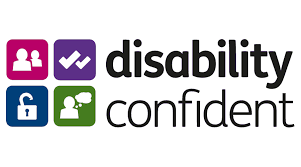The Contingent Workforce Hiring Landscape for IT Services & Consulting Companies in 2025:
Leveraging SOWs and Staffing Agencies for Technical Talent

As the IT services and consulting industry evolves, the contingent workforce hiring landscape in 2025 is poised to experience unprecedented transformations. With the rapid pace of digital innovation, the demand for specialized technical talent continues to outstrip supply, compelling companies to adopt more agile and effective hiring strategies. Among these, the use of Statement of Work (SOW) agreements and partnerships with specialized staffing agencies have emerged as key enablers in securing top-tier talent.
The Rise of Contingent Workforce Models in IT Services
The global IT services and consulting sector thrives on flexibility, innovation, and speed. To remain competitive, companies are increasingly relying on contingent workers—independent contractors, freelancers, and temporary staff—who offer critical expertise without the long-term commitment of traditional employment.
In 2025, this trend is expected to accelerate due to several factors:
Digital Transformation Initiatives: Organizations continue to adopt emerging technologies such as AI, cloud computing, and cybersecurity solutions, driving the need for highly skilled technical professionals.
Talent Shortages: A global shortage of technical talent, particularly in areas like data science, DevOps, and full-stack development, has made contingent hiring a practical solution.
Economic Uncertainty: Companies prioritize cost efficiency and scalability, making it attractive to hire project-based talent rather than onboarding permanent employees.
SOW Agreements: A Strategic Approach to Project-Based Hiring
Statement of Work (SOW) agreements have become a preferred method for IT services and consulting companies to engage contingent workers. SOWs outline project deliverables, timelines, and payment terms, providing clarity for both employers and contractors.
Key Benefits of SOWs:
Clear Objectives: SOWs ensure that technical talent is hired for specific outcomes, minimising ambiguity and enhancing productivity.
Cost Control: By defining budgets and deliverables upfront, companies can better manage project costs.
Compliance Assurance: SOWs help mitigate legal risks, especially in regions with complex labour laws, such as the European Union’s IR35 regulations.
For example, in highly regulated markets like the UK, USA, Germany and the Netherlands, where MarkJames Search is expanding its contingent workforce services, SOWs offer a structured way to engage talent while adhering to local compliance requirements.
Staffing Agencies: Unlocking Access to Niche Technical Talent
Staffing agencies specialising in IT services and consulting have become indispensable partners for companies looking to navigate the complexities of the contingent workforce. These agencies provide access to pre-vetted pools of skilled professionals, saving companies significant time and resources.
Advantages of Partnering with Staffing Agencies
Speed and Efficiency: Agencies have the tools and networks to source high-calibre talent quickly, which is critical for time-sensitive projects.
Specialised Expertise: Many agencies focus on niche areas, such as AI, cybersecurity, or cloud engineering, ensuring that clients find the right fit for their technical needs.
Global Reach: With the rise of remote work, staffing agencies enable companies to tap into talent markets across the globe.
In 2025, IT services companies are expected to increasingly partner with agencies to handle high-volume hiring for contingent workers, particularly in regions with stringent employment regulations. By leveraging these partnerships, companies can focus on their core business functions while agencies manage the complexities of sourcing, onboarding, and compliance.
The Future of Contingent Hiring in IT Services
As we move further into 2025, IT services and consulting companies must embrace hybrid workforce strategies that combine SOW agreements and staffing agency partnerships. Together, these approaches provide the agility, efficiency, and compliance assurance required to thrive in a competitive market.
Whether it’s scaling a project team to deliver a cloud migration initiative or filling niche roles in emerging technology domains, the contingent workforce will continue to play a pivotal role in the success of IT services and consulting firms. Companies that adapt to these hiring trends with robust strategies and trusted partners will gain a significant edge in the race for top technical talent.
In this dynamic landscape, one thing is certain: the contingent workforce isn’t just a stopgap—it’s the future of work in IT services and consulting.
About MarkJames Search
As a leader in contingent workforce hiring, MarkJames Search specializes in sourcing technical and niche talent for IT services and consulting companies globally. With expertise in SOW-based hiring, compliance management, and staffing solutions, we empower clients to meet their workforce needs efficiently and effectively. Contact us to learn more about how we can support your hiring strategies in 2025.
For more information visit
https://www.markjamessearch.com/contingent-workforce


Mark James Search | All Rights Reserved 2024 | Privacy Policy | Terms & Conditions | Powered with 🤍 by Shazamme




